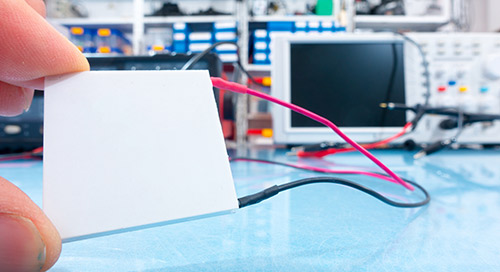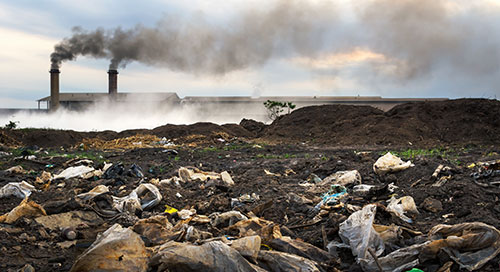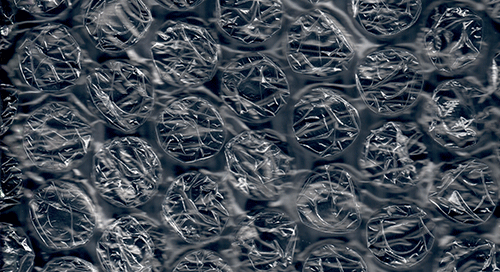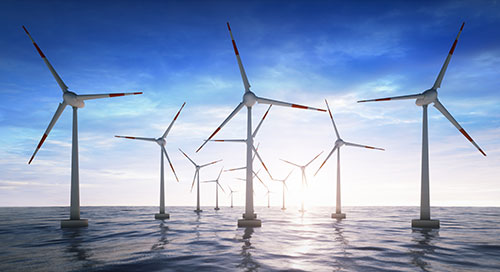working-towards-sustainability-in-21st-century-aviation
February 11, 2022
Working towards sustainability in 21st century aviation
We live in an interconnected world; one where air travel has become a part of everyday life. But, can it ever be sustainable? What can we do to ensure we minimize the impact of aviation on our climate?
In his new book, Aircraft Propulsion: Cleaner, Leaner, Greener Saeed Farokhi tackles aviation-related pollution at the local and global scale.
Sustainability: an achievable goal?
Within the context of aviation, sustainability is based on three inter-related concepts:
- The impact on the environment (climate, air quality, noise)
- The renewability of the energy sources
- The societal factors (e.g. economics) that increase our need for air transportation
The impact of aviation on the environment starts at ground level – think air quality near airports – and rises through the Earth’s atmosphere with climate change causing greenhouse gas (GHG).
And it isn’t just aircraft engines we need to consider; auxiliary power units, ground support equipment, ground access vehicles, construction activities, and maintenance operations all contribute to aviation-related pollution at airports. At altitude, greenhouse gases in the engine emissions contribute to the global warming effect.
Combustion emissions
There are a number of ways aviation emissions impact upon the environment. The combustion of fossil fuel in the air results in water vapor and carbon dioxide formations that belong to the category of greenhouse gases. Due to their impact on air quality, nitrogen oxides are major concerns. They also play a catalytic role in ozone production or depletion in the lower and upper atmosphere, respectively. Particulate matter in the exhaust also adversely effects air quality.
There are two areas of concern with air pollution. The first – engine emissions near airports in the landing-take off cycle (below 3,000 feet). The second area of concern focuses on the effect of engine emissions at the climb-cruise-descent phase (above 3,000 feet).
Greenhouse Gases
Greenhouse gases absorb and re-emit infrared radiation and contribute to the Earth’s warmer climate. Without them, the Earth’s surface would be 43∘C colder. They also linger, often staying in the atmosphere for decades, even centuries, before being absorbed by the oceans, forests, plants, and soil. In addition to the dynamics of GHG in the atmosphere, sunlight is reflected from the surface of ice sheets, soil, and oceans, in a process known as the albedo effect. Through this effect, melting ice sheets and deforestation contribute to global warming.
The adverse impact of human-contributed greenhouse gases in the atmosphere is universally acknowledged, the human impact on our atmosphere undeniable.
The rapid rise in carbon dioxide concentration over the past 100 years coincides with an increasing consumption of fossil fuels for electric power generation, home heating, and transportation.
The transportation sector contributes 31% of carbon dioxide emissions in the US, with aviation responsible for 12% of CO2 emissions from all transport sources.
However, given that aviation is the fastest growing sector within transportation, it is also a prime candidate for a revolutionary new approach to its propulsion system, air-frame design, system integration, and eco-friendly operational measures.
Fuels for sustainable aviation
Sustainable aviation demands renewable jet fuels for future air travel, with an environmentally friendly replacement for the current fleet of fossil fuel-burning aircraft. It also requires a reliable fuel supply and stable fuel prices (the history of crude oil fluctuation alone makes it an unreliable and unsustainable fuel).
The combustion of fossil fuels in powerplants, aircraft engines, ships, and road vehicles produces greenhouse gas emissions, destroys ozone in the atmosphere, and reduces surface air quality. On the other hand, alternative jet fuels (AJF), or biofuels, are renewable and can help reduce greenhouse gas emissions, as well as soot and particulate matter emissions from jet engines. What’s more, the lack of aromatic hydrocarbons and sulfur in AJF, as compared to conventional fossil fuels, is considered a significant environmental advantage.
Hybrid-Electric and Distributed Electric Propulsion
Greener aviation also points towards the electrification of the aircraft propulsion and power systems - for example, hybrid propulsion and power systems, which are the aviation version of the hybrid engines used in cars.
In hybrid propulsion, the exhaust energy in the gas turbine is used to generate electricity, so the hybrid-electric propulsion system produces lower atmospheric heat release than the conventional turbofan engines. We also need to take into account noise levels during landing-take off cycles; lower pressure ratio (PR) fans are quieter than their higher PR counterparts.
All-electric propulsion is powered solely by batteries or equivalent energy sources. So, the carbon/environmental footprint of electric propulsion is mainly in the type of charging systems used in charging the batteries. Using the coal-fired (fossil-fuel) based power grid will inevitably have a different carbon footprint to using renewable sources such as solar or wind power. Plus, the environmental impact of mining for the minerals and metals used in batteries needs to be accounted for, if we’re to get a true picture of the environmental effect of electric propulsion.
What’s next?
From science-fiction to reality; there are lots of exciting new vehicles on the drawing board for many different uses, and at different speeds.
The interest in uninhabited aerial vehicles (UAVs) has also grown and is prompting new designs, such as the tailless agility aircraft X-36 from Boeing. NASA’s interest in hypersonic flight and scramjet propulsion has led to the X-43 series of technology demonstrator vehicles.
Aviation is a fast-growing and developing field; although there is a long way to go, new fuels and technologies are leading the way to a more sustainable future.
Want more details and an in-depth read into this area? Check out Aircraft Propulsion: Cleaner, Leaner, Greener













